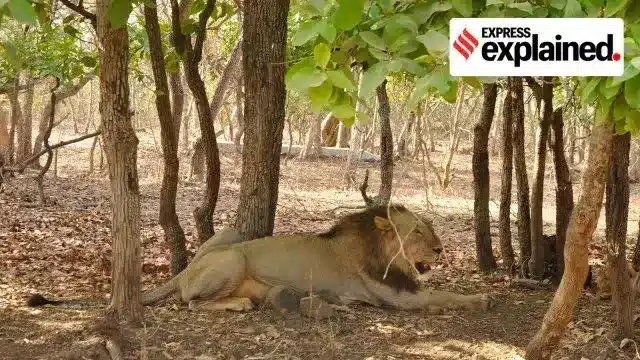About Eco-Sensitive Zones:
- As per the National Wildlife Action Plan (2002-2016), issued by the Union Ministry of Environment, Forest and Climate Change, land within 10 km of the boundaries of national parks and wildlife sanctuaries is to be notified as eco-fragile zones or Eco-Sensitive Zones (ESZ).
- While the 10-km rule is implemented as a general principle, the extent of its application can vary.
- Areas beyond 10-km can also be notified by the Union government as ESZs, if they hold larger ecologically important “sensitive corridors”.
- It acts as buffer zones around Protected Areas — national parks, wildlife sanctuaries, tiger reserves, etc. — so that the wildlife has a transition zone around them.
- Significance of ESZ
- Eco-Sensitive Zones are created as “shock absorbers” for the protected areas, to minimize the negative impact on the “fragile ecosystems” by certain human activities taking place nearby.
- These areas are meant to act as a transition zone from areas requiring higher protection to those requiring lesser protection.
- Permitted activities in ESZ: Ongoing agricultural or horticultural practices, rainwater harvesting, organic farming, among others.
- No commercial mining, stone quarrying, large hydroelectric projects, polluting industries, brick kilns, etc. are allowed in ESZ.
- Commercial establishment of hotels, resorts, small-scale non-polluting industries and the construction of civic amenities are regulated.
What makes Gir unique?
- Gir PA includes the Gir National Park, the Gir Wildlife Sanctuary, the Paniya Wildlife Sanctuary and the Mitiyala Wildlife Sanctuary, spread across the Junagadh, Amreli and Gir Somnath districts in Gujarat’s Saurashtra region in its south.
Q1: What are protected areas?
These are specifically delineated areas designated and managed to achieve the conservation of nature and the maintenance of associated ecosystem services and cultural values through legal or other effective means.
Source: Why a proposed Eco-Sensitive Zone around Gir forest is facing protests
Last updated on June, 2025
→ UPSC Notification 2025 was released on 22nd January 2025.
→ UPSC Prelims Result 2025 is out now for the CSE held on 25 May 2025.
→ UPSC Prelims Question Paper 2025 and Unofficial Prelims Answer Key 2025 are available now.
→ UPSC Calendar 2026 is released on 15th May, 2025.
→ The UPSC Vacancy 2025 were released 1129, out of which 979 were for UPSC CSE and remaining 150 are for UPSC IFoS.
→ UPSC Mains 2025 will be conducted on 22nd August 2025.
→ UPSC Prelims 2026 will be conducted on 24th May, 2026 & UPSC Mains 2026 will be conducted on 21st August 2026.
→ The UPSC Selection Process is of 3 stages-Prelims, Mains and Interview.
→ UPSC Result 2024 is released with latest UPSC Marksheet 2024. Check Now!
→ UPSC Toppers List 2024 is released now. Shakti Dubey is UPSC AIR 1 2024 Topper.
→ Also check Best IAS Coaching in Delhi
























